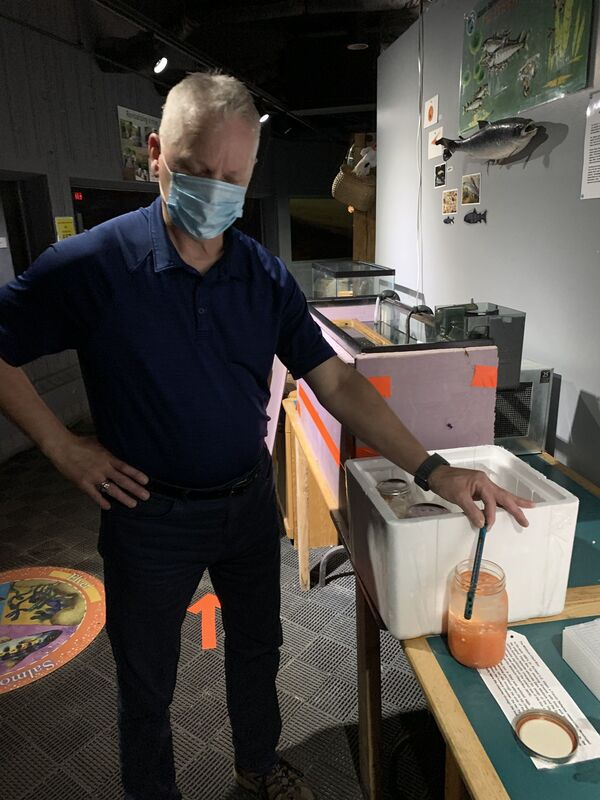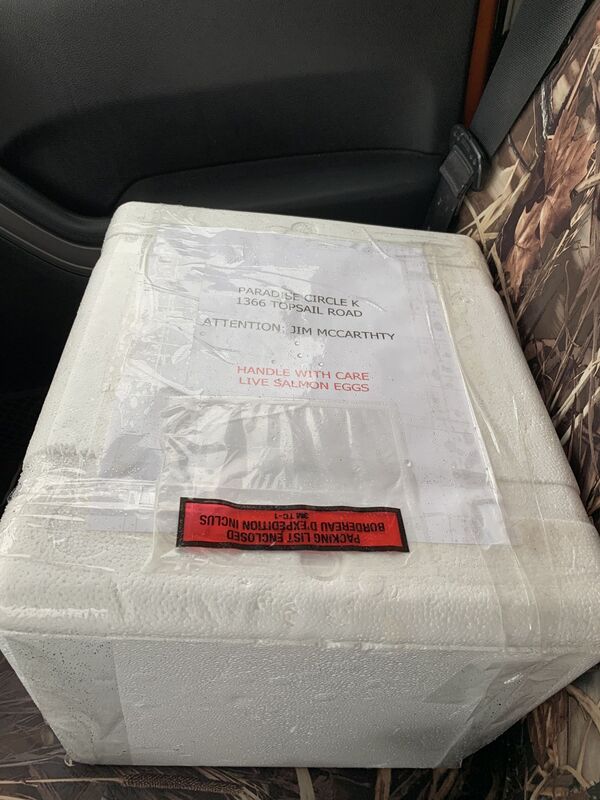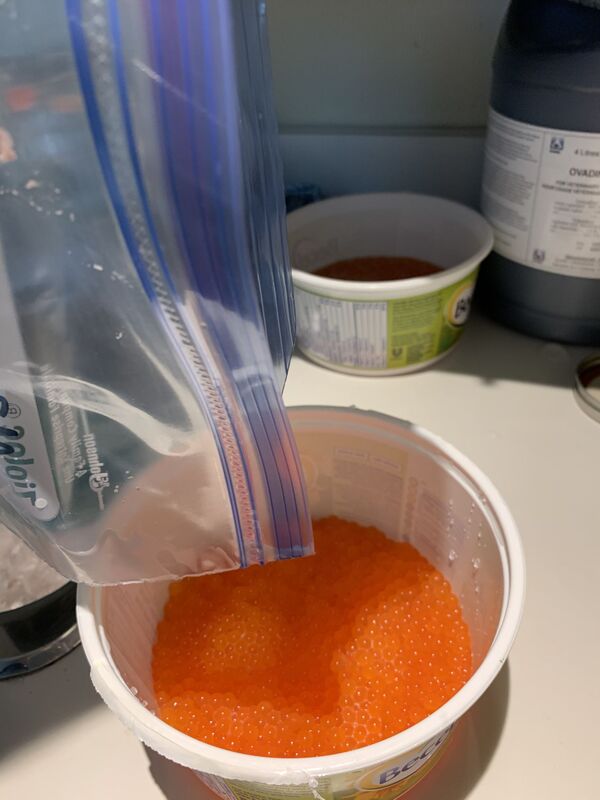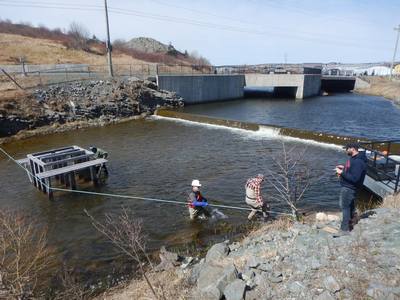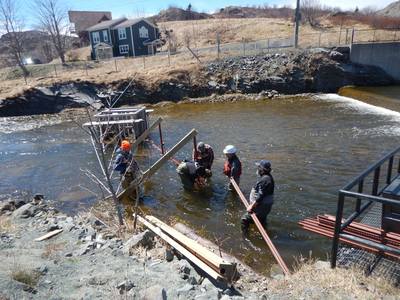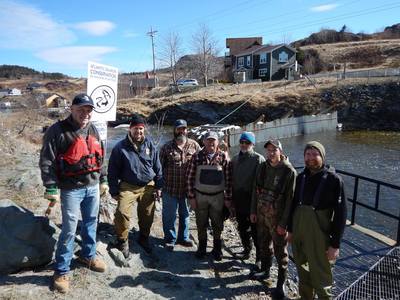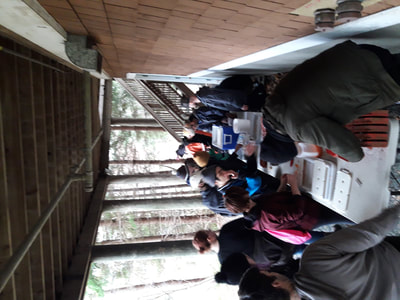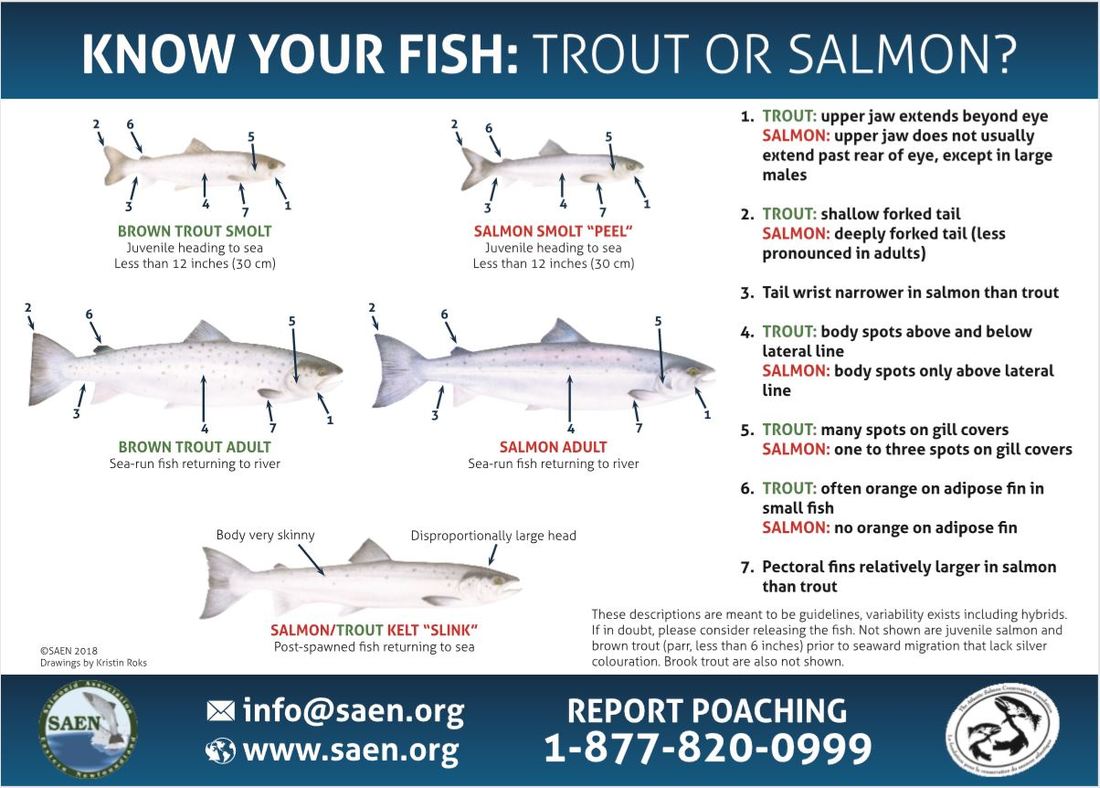SAEN supports educational Fish Friends program at the Fluvarium
Like clockwork, the salmon in the Exploits River return and prepare to spawn. And with similar annual timing, the Exploits River Management Association (ERMA) collects a few adults as they pass through their Interpretation Centre and Fishway to assist in salmon rehabilitation and education projects. SAEN annually cooperates with ERMA to provide fertilized eggs to the Fluvarium in St. John’s for its Fish Friends program for local elementary schools.
On October 26, 2020 this years eggs and milt were collected by ERMA biologists and shipped unfertilized to St. John’s on the DRL bus from Grand Falls. The night the eggs arrived they were cleaned and fertilized by SAEN volunteers and allowed to become more resilient (harden) overnight. On the morning of October 27, they were disinfected and delivered to the Fluvarium’s incubator where they will develop through the winter. When spring arrives, newly hatched salmon fry will be delivered to local elementary schools where they will learn about salmon, their life history, and environmental stewardship. The fry will then be taken to Rennies River by each class and released where they will help in re-establishing Atlantic salmon in the City’s rivers.
To learn more about this program and many others offered by the Fluvarium, visit their website at www.fluvarium.ca.
Like clockwork, the salmon in the Exploits River return and prepare to spawn. And with similar annual timing, the Exploits River Management Association (ERMA) collects a few adults as they pass through their Interpretation Centre and Fishway to assist in salmon rehabilitation and education projects. SAEN annually cooperates with ERMA to provide fertilized eggs to the Fluvarium in St. John’s for its Fish Friends program for local elementary schools.
On October 26, 2020 this years eggs and milt were collected by ERMA biologists and shipped unfertilized to St. John’s on the DRL bus from Grand Falls. The night the eggs arrived they were cleaned and fertilized by SAEN volunteers and allowed to become more resilient (harden) overnight. On the morning of October 27, they were disinfected and delivered to the Fluvarium’s incubator where they will develop through the winter. When spring arrives, newly hatched salmon fry will be delivered to local elementary schools where they will learn about salmon, their life history, and environmental stewardship. The fry will then be taken to Rennies River by each class and released where they will help in re-establishing Atlantic salmon in the City’s rivers.
To learn more about this program and many others offered by the Fluvarium, visit their website at www.fluvarium.ca.
Rennie’s River Restoration
Since 2012 SAEN has been stocking the Rennie’s River, in the middle of St. John’s, with Atlantic salmon eggs from the Exploits River. The aim of the program is to engage the public in issues related to Atlantic salmon conservation and to reestablish a run of Atlantic salmon within the city. If you would like to volunteer to help place eggs within the river please contact SAEN. Salmon eggs are placed in river around November 1 each year. SAEN has also undertaken a number of habitat improvement projects throughout the watershed and installed a smolt counting fence below Quidi Vidi Lake to count outgoing salmon smolts.
Since 2012 SAEN has been stocking the Rennie’s River, in the middle of St. John’s, with Atlantic salmon eggs from the Exploits River. The aim of the program is to engage the public in issues related to Atlantic salmon conservation and to reestablish a run of Atlantic salmon within the city. If you would like to volunteer to help place eggs within the river please contact SAEN. Salmon eggs are placed in river around November 1 each year. SAEN has also undertaken a number of habitat improvement projects throughout the watershed and installed a smolt counting fence below Quidi Vidi Lake to count outgoing salmon smolts.
Public Education Projects
During the winter of 2018 SAEN hosted a series of public lectures by salmonid scientists and researchers in St. John’s.
Topics by graduate students included:
-Factors that affect early salmonid development, Heather Penney
-Using archival and acoustic telemetry to investigate the marine behavior of Atlantic salmon in NL, Kristin Boe
-Viability of Atlantic salmon, brown trout, and bidirectional hybrids during the early developmental stage, Steven Poulos
-Using data storage tags to study fish physiology and behavior, Zoe Zrini
Topics by DFO Scientists included:
-Conservation genomics of Atlantic salmon in North America, Ian Bradbury
- Should I Stay or Should I Go: Developmental, Physiological, Behavioral and Morphological Differences between Offspring from Alternative Life Histories, Travis Van Leeuwen
SAEN also developed a number of signs to place at various fishing locations across Eastern Newfoundland including fish identification signs, river name signs, and do not litter signs.
During the winter of 2018 SAEN hosted a series of public lectures by salmonid scientists and researchers in St. John’s.
Topics by graduate students included:
-Factors that affect early salmonid development, Heather Penney
-Using archival and acoustic telemetry to investigate the marine behavior of Atlantic salmon in NL, Kristin Boe
-Viability of Atlantic salmon, brown trout, and bidirectional hybrids during the early developmental stage, Steven Poulos
-Using data storage tags to study fish physiology and behavior, Zoe Zrini
Topics by DFO Scientists included:
-Conservation genomics of Atlantic salmon in North America, Ian Bradbury
- Should I Stay or Should I Go: Developmental, Physiological, Behavioral and Morphological Differences between Offspring from Alternative Life Histories, Travis Van Leeuwen
SAEN also developed a number of signs to place at various fishing locations across Eastern Newfoundland including fish identification signs, river name signs, and do not litter signs.


